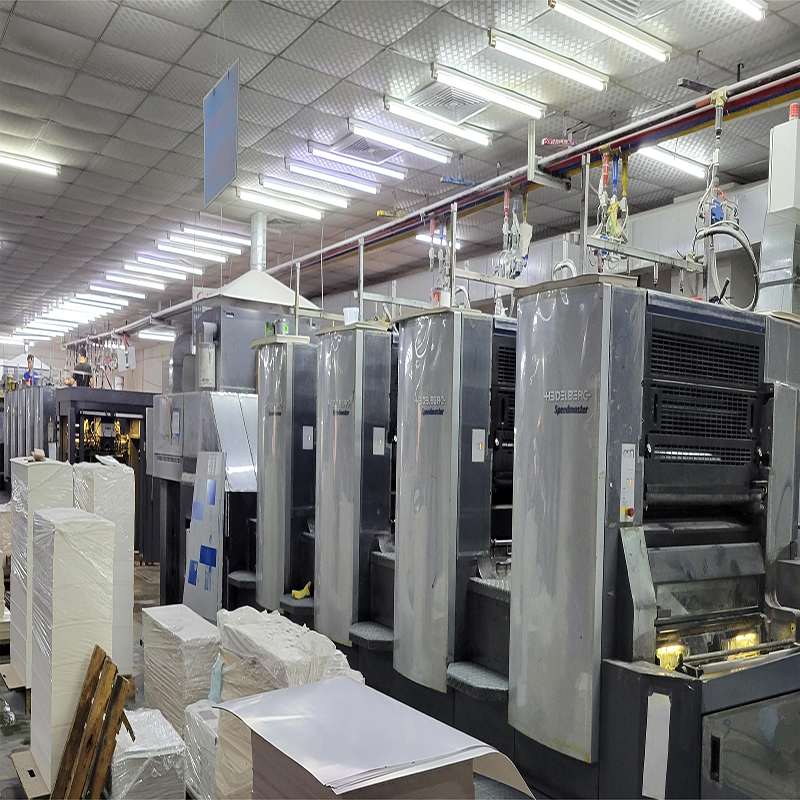Environmentally Conscious Printing: Sustainable Approaches for Books
1. Environmentally Sustainable Approaches In Book Printing
(1)Using eco-friendly inks
The use of traditional printing inks often involves petroleum-based compounds and volatile organic compounds (VOCs), which can pose environmental and health risks. In contrast, eco-friendly inks offer sustainable alternatives that reduce environmental footprints and reduce health hazards. These inks typically have lower VOC content, which helps minimize air pollution and indoor air quality issues. Additionally, eco-friendly inks are often manufactured using renewable resources and environmentally friendly processes, thereby reducing their overall environmental impact. They are easier to handle and recycle, helping to reduce waste. Additionally, environmentally friendly inks are safer to handle and produce less harmful fumes, improving printer worker health and safety.
(2)Advanced printing technology
Conventional printing techniques often necessitate substantial energy usage for heating, drying, and running printing machinery. These energy-intensive procedures result in the emission of greenhouse gases and escalate operational expenses for printing facilities. Contemporary printing presses are equipped with energy-conserving attributes like automatic shutdown systems, variable speed drives, and effective heat regulation. These presses streamline energy utilization during printing operations, ultimately curbing overall energy consumption.
(3)Reduce the waste of printing materials
Traditional printing methods often lead to substantial waste production, including paper trimmings, discarded prints, and surplus materials. Waste management raises environmental issues, such as the use of landfills, resource depletion, and pollution.
Adoption of waste reduction measures:
-
-
- Enhancing prepress procedures to reduce paper waste
- Embracing print-on-demand (POD) and digital printing to limit excessive production
- Repurposing and recycling waste materials, such as paper trimmings and remnants
-
2.Green Materials
(1)Purchase recyclable paper
Significance of sustainable paper sourcing:
-
-
- Combatting deforestation and habitat destruction.
- Upholding biodiversity preservation and ecosystem well-being.
- Advocating for conscientious forest management methods.
-
Certification standards for sustainable paper:
-
-
- Forest Stewardship Council (FSC): Ensures that paper products come from responsibly managed forests.
- Programme for the Endorsement of Forest Certification (PEFC): Promotes sustainable forest management worldwide.
- Sustainable Forestry Initiative (SFI): Certifies that paper products meet strict environmental and social standards.
-
(2)Explore alternative materials like recycled paper and plant-based resources
Plant resources:
-
-
- Suitable for a variety of paper and packaging items, including book covers, pages and packaging components.
- Address procurement barriers and ensure sustainable farming practices.
- Advances in plant materials technology and product innovation.
-
3.Vision Of The Future
(1)Potential Advances in Environmentally Friendly Book Printing
-
-
- Advances in printing technology: Continued advances in printing technologies such as 3D printing and nanotechnology may provide more sustainable options that reduce resource consumption and waste generation.
- Materials Innovation: The exploration of new materials, such as bio-derived polymers, algae inks and negative carbon footprint papers, has the potential to transform the sustainability of book printing by providing environmentally friendly alternatives to traditional materials.
- Circular economy strategy: Employing circular economy principles, such as closed-loop paper recycling systems and comprehensive product lifecycle management, can further improve resource efficiency and minimize the environmental impact of book production.
-
(2)The impact of regulations and policies on promoting sustainable practices
-
-
- Raising environmental standards: Authorities may impose stricter rules on resource extraction, emissions and waste disposal to encourage environmentally friendly methods and ensure companies are held accountable for their environmental impact.
- Financial incentives: Measures such as tax incentives, grants and subsidies can stimulate the adoption of sustainable technologies and practices, making them more economically viable for businesses.
- Producer Responsibility Extended (PRE): Policies that require producers to take responsibility for the end-of-life management of their products can stimulate progress in environmentally friendly design and encourage the use of recyclable and biodegradable materials in book production.
-
4. Conclusion
Environmentally conscious book printing is critical to mitigating environmental impact, conserving resources and meeting the growing demand for environmentally friendly products. By adopting sustainable practices and materials, the industry can combat climate change, reduce pollution and promote responsible resource management, creating a more sustainable future for the environment and society.
As key players in the book printing industry, it is vital that publishers, printers, suppliers and consumers prioritize sustainability. By adopting environmentally friendly practices such as recycled paper, eco-friendly inks and biodegradable packaging, stakeholders can minimize environmental impact and enhance the industry's long-term sustainability. Collaboration, innovation and advocacy are critical to driving positive change and fostering a sustainable culture throughout the book printing supply chain. Together, let’s commit to prioritizing sustainability, making informed decisions, and taking practical action to create a more sustainable and resilient future for the book printing industry and the planet as a whole.
Join us in adopting eco-friendly book printing practices. Let's reduce our environmental impact together through eco-friendly materials and sustainable production methods.












